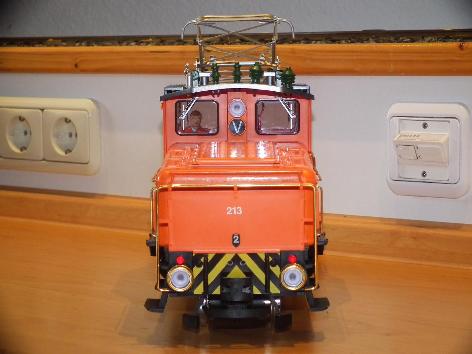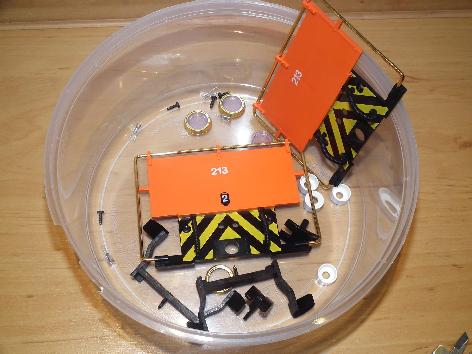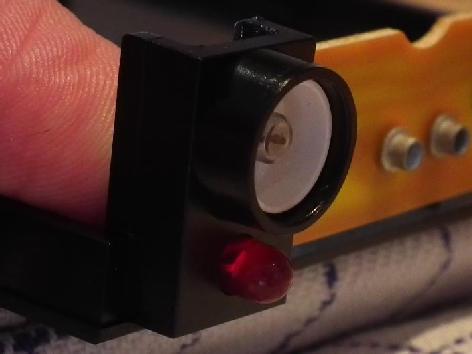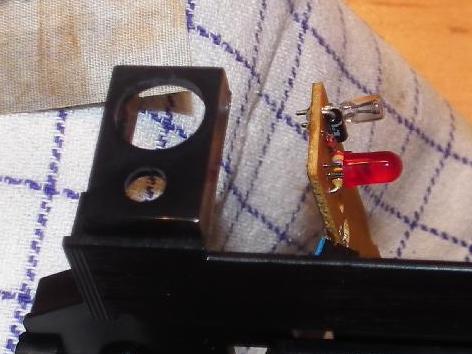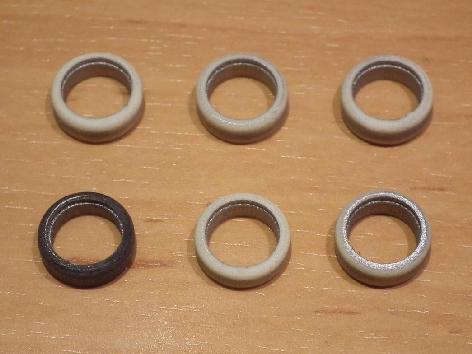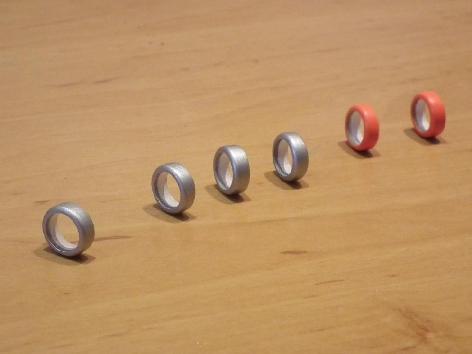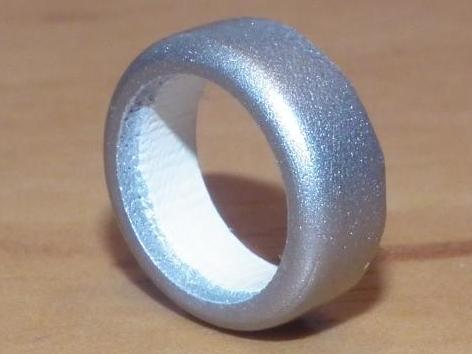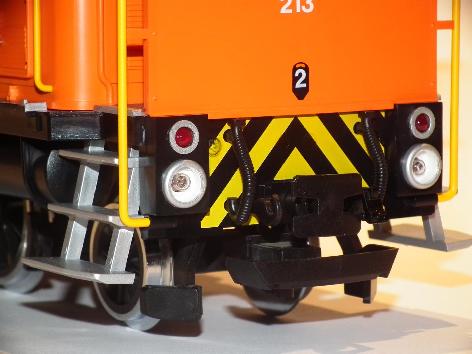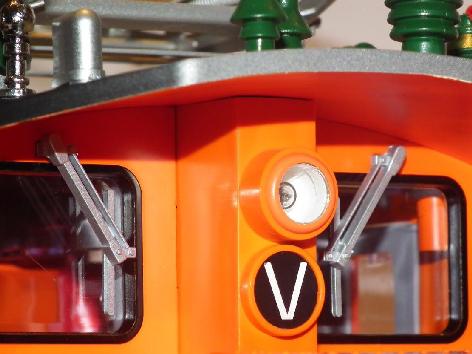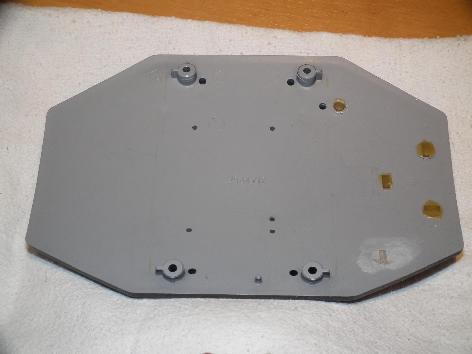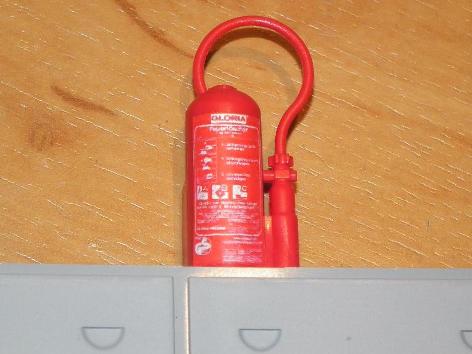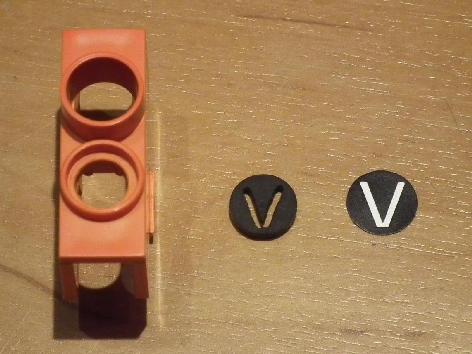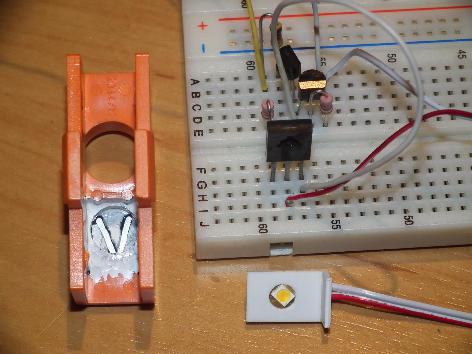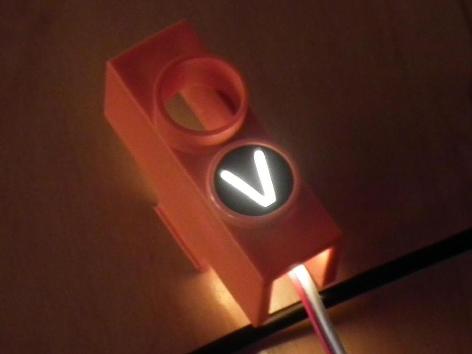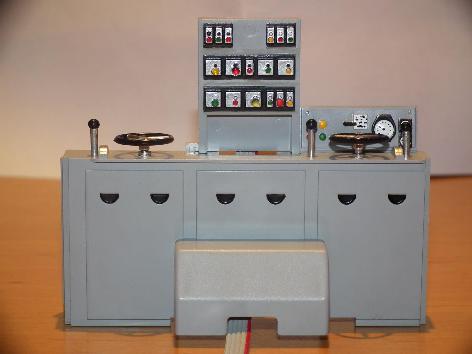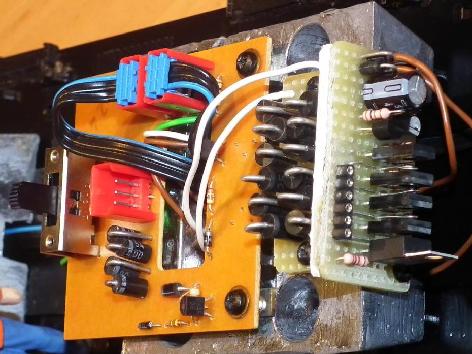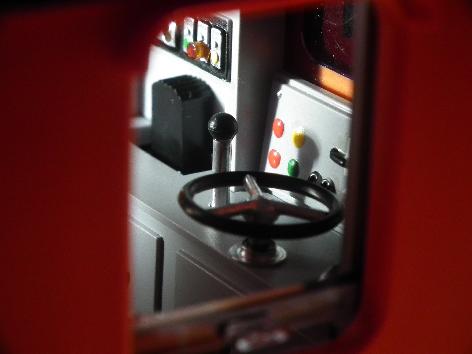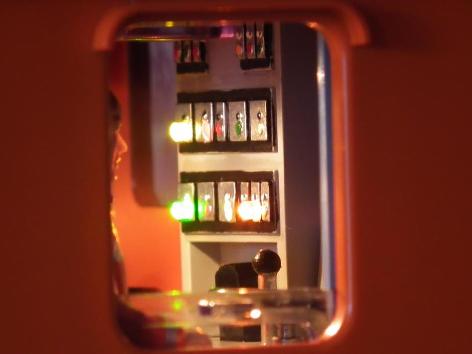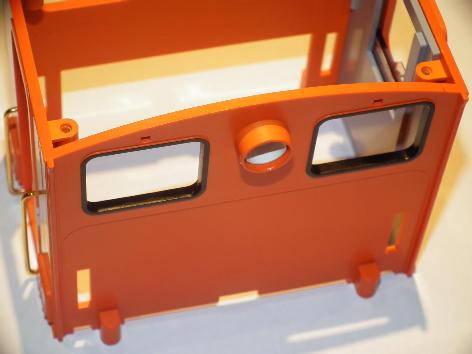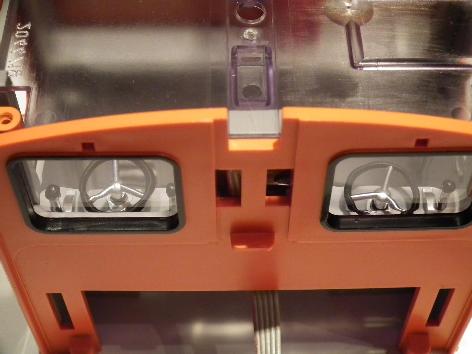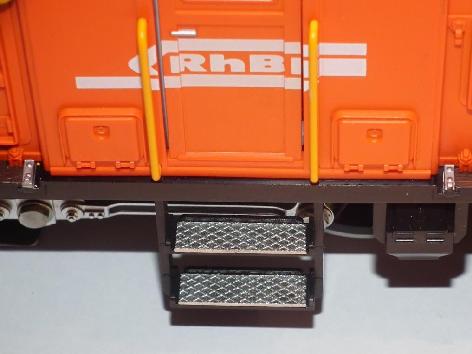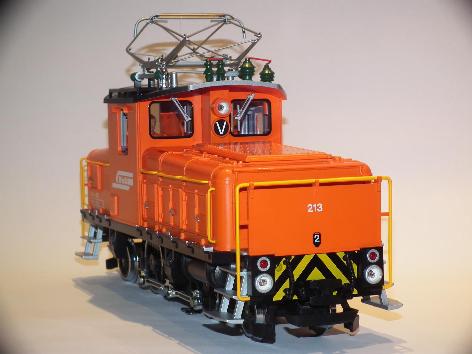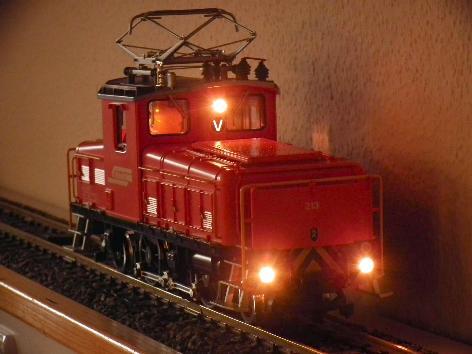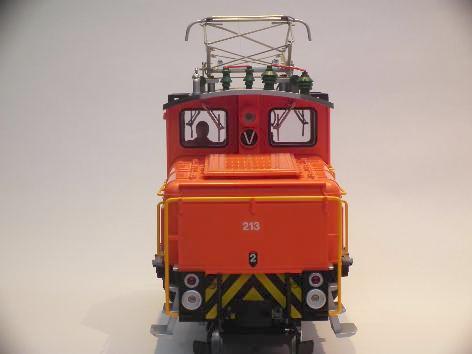Katzhagen - Archive - September 2016
And once again 12000 miles...
This locomotive had been purchased from the same vendor in South Africa like the RhB G3/4 11 "Heidi" and hence also has 12000 miles under the belt - of course by airplane and not on the model tracks...
This model dates back to the Nuremberg times of LGB when the order numbers still were four-digit and prototypical detailing was not as much in focus as it is today. But little modifications like additional small parts and a bit of paint provide for an appearance looking significantly more like its prototype.
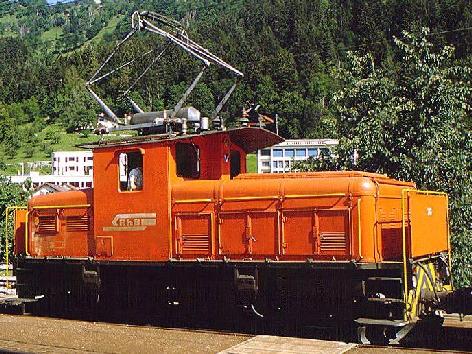
The prototype's front...
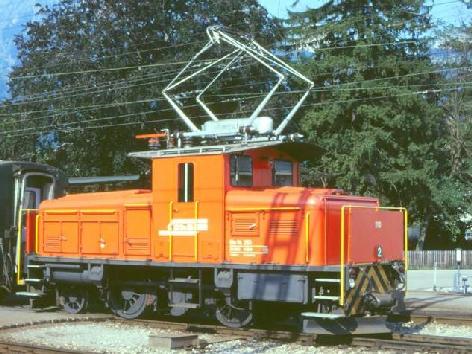
... and rear side.
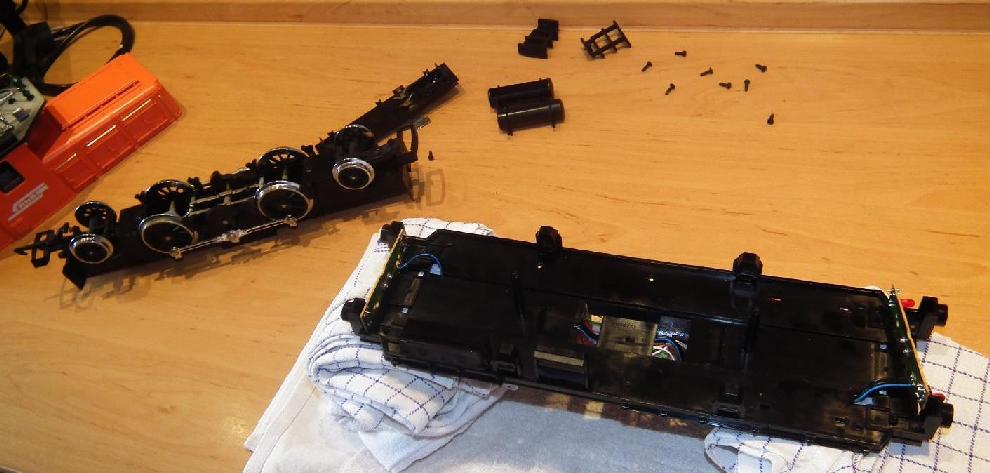
Access to the PCBs is required for modifying the head and tail lights, which is impossible without removing the propulsion unit. The latter is held by two screws inside the gearbox.
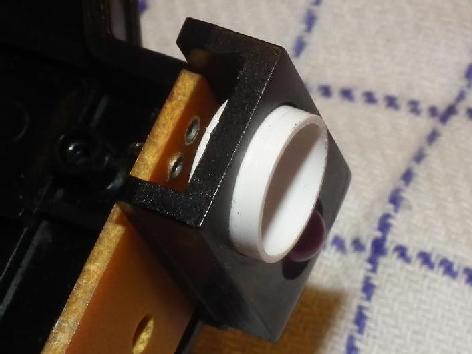
The illumination fits flush after sinking the bulbs' sockets in the PCB and after truncation of the LEDs' leads, but the reflector still is too long...

The reflectors' truncation for also fitting flush is done quickly - but still insufficient as it will turn out later on...
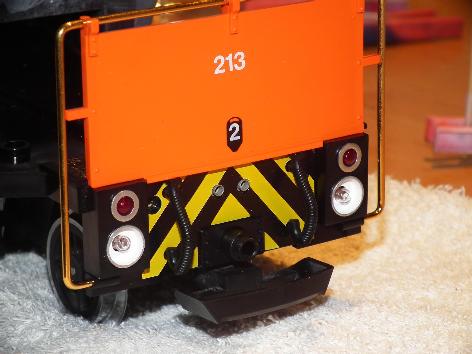
Having mounted the standard LED holders and putting in place the reflectors, it's clear there is a need for bezels for the head lights, too.

Suitable bezels were acquired, but needed some treatment. Master parts on the left, processed parts for a light's modification on the right.
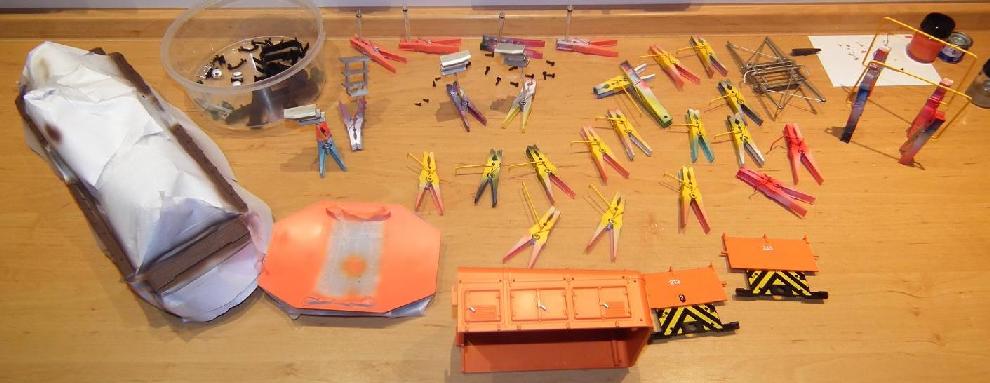
Partial painting of small parts as well as of the chassis and the superstructure in brown, yellow, orange, red and silver. These parts got a final semi-glossy clear protection coat.
The black plate's V-sign was cut out and covered with a new V-sign printed on
self-adhesive film. A test circuit was set up to determine the correct current
for feeding the V-sign's background lighting LED. The orange housing's interior
was painted black first to prevent the light from shining through and then was
painted white for a better efficiency of the LED.
Applying black paint to the window frames results in an effect comparable to
sealings like known from the prototype. A trick which already had been used
successfully with the Ge 4/4 II models.
Existing details like handles, steps and railings as well as slats etc.
were emphasized by painting them according to the prototype, which resulted in
a signifcant improvement of the overall appearance.
| Item | Manufacturer/Provider |
|---|---|
| Headlight bezels | Christian Fesl |
| Hooks and screw couplings | Champex-Linden |
| Taillight bezels and electronic parts |
RS components |
August 2016 | Archive "Current Affairs" | November 2016

